How to use
How to use
- Press the plus button (+) next to Character on the left side of the screen to load the vrm model in Local or Vroid Hub. “Local” will select the VRM model from your PC. “Vroid Hub” will load the model from the model uploaded to Vroid Hub.
*If the model is not made by Vroid, it may not work properly. - Please read the motion (.vmd) of the model from “Load Motion”.
*If a motion other than the model is loaded, it will not work properly. - As soon as you have all of the above, press the “Play” button at the bottom right of the screen to play.
- After playback, you can stop playback with the “Esc” key.
*For screen recording, please use capture software such as Windows Capture (Windows Button + G).
Additional Settings
〇Character Settings
By pressing the Character button in the upper left corner of the screen, you can set the character’s position and details. (More on that later.)
〇Using camera motion
Load the camera motion (.vmd) from “Load Camra Motion”.
〇Using the stage
Load the stage from “Load Stage”. The “.x”, “.obj” and “.fbx” are supported.
*fbx recommended
**Depending on the object, the texture may not be loaded correctly.
***If the file name or path contains two-byte characters, an error will occur.
(Example)
×C/Desktop/3Dモデル/教室.obj
◎C/Desktop/3Dmodel/classroom.obj
The stage name is displayed in the StageObject in the upper left corner.
You can edit the position, rotation and size of the stage after clicking on the stage name.
〇Using audio
Click the “Load Button” from the “Audio” button to load an audio file (.mp3). You can adjust the size of the music (Volume) and the playback timing (Start Audio Offset). The timing of the playback depends on the specifications of your PC, so please adjust accordingly.
〇Envrionment
From “Envrionment” you can change the background color, lighting direction, lighting color, etc.
User guide
Screen Composition
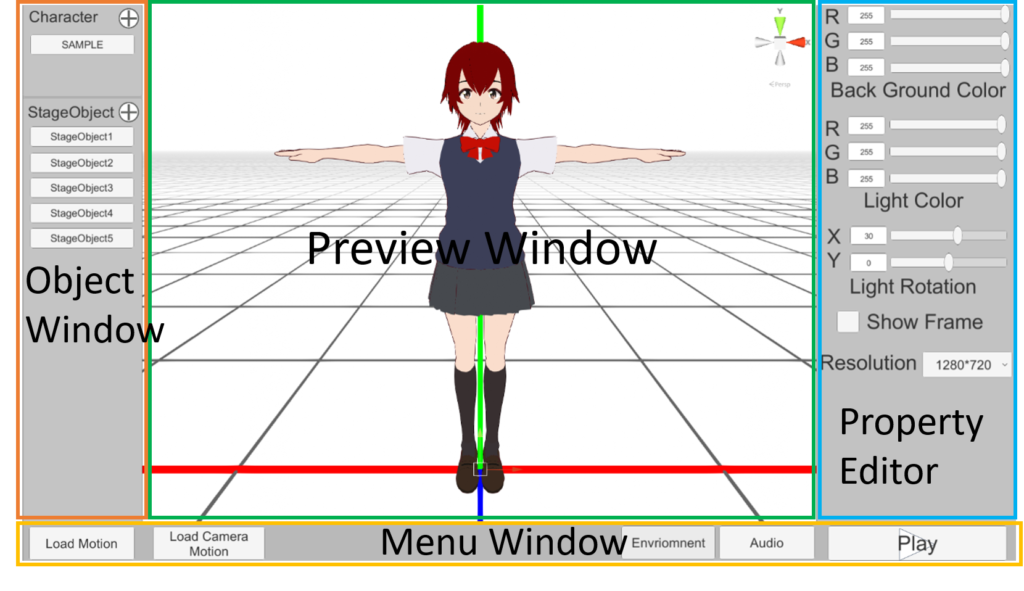
〇Object window … List of loaded objects is displayed.
〇Menu window …Selects the operation assigned to each button.
〇Preview window …Current screen configuration.
〇Property Editor …Edit each item.
Preview window
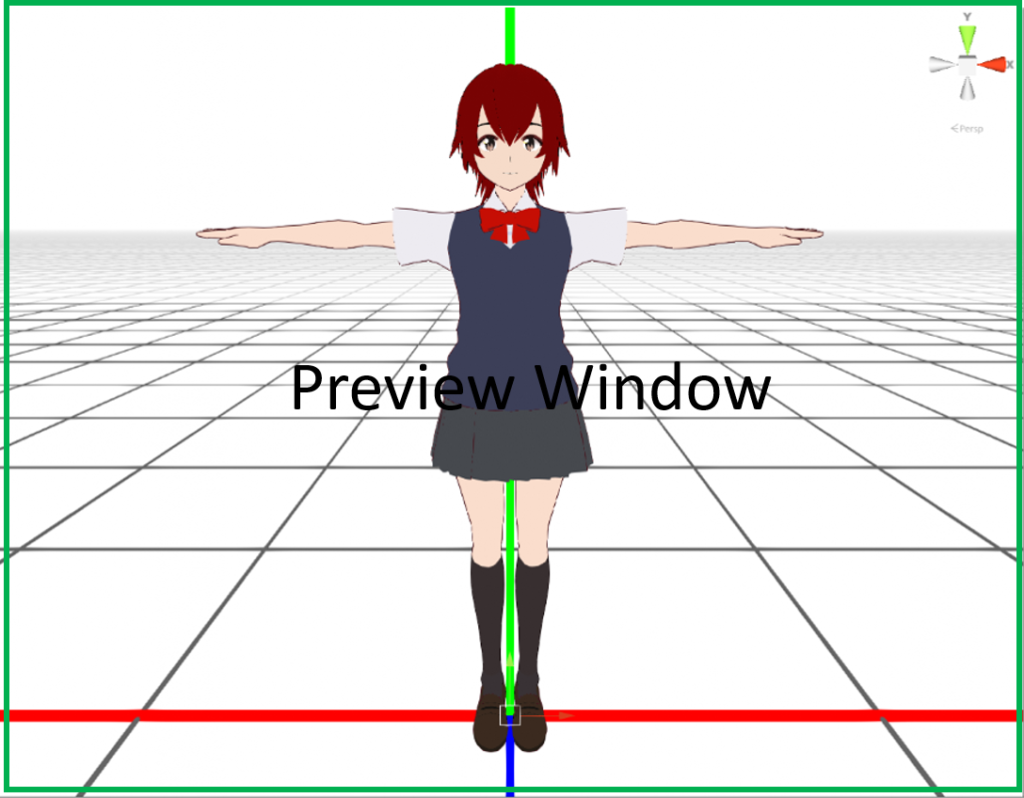
Screen operation
- Left click … Select object
- Right click & drag … Rotate to camera center
- Middle click & drag … Move camera parallel
- Alt & right click & drag … Rotate around clicked position
- Wheel … Zoom camera
- Q+Right click … Backward
- W+Right click … Up
- E+Right Click … Forward
- A+Right click … Left
- S+Right Click … Down
- D+Right Click … Right
- Esc … Stop playback
- Ctrl+Z … Undo (model transform only)
- Ctrl+Y … Redo (model transforms only)
Shortcut
0…From front
1…From left
2…From back
3…From right
4…From adove
5…From bottom
When object is selected
W…Move
E…Rotate
R…Scale (stage only)
G…Move in global coordinates
L…Move in local coordinates
Shift …Move in screen coordinate system
P…Each time you press it, you can transform based on the center of multiple models in case of multiple selections, individually, or based on the center of the last one you touched
Menu window

Button Description
Load Motion …Load the model motion(.vmd)
Load Camera Motion …Load camera motion(.vmd)
Environment …Change the environment settings.
Audio …Load and set music.
Play …Play, Esc to stop playback.
Object window

When you load the model, the model name will be displayed. You can click on the model name to edit it in the property editor.
Property editor
Model editor
If you select the character name in the object window while the model is loaded, the property editor will look like below image.
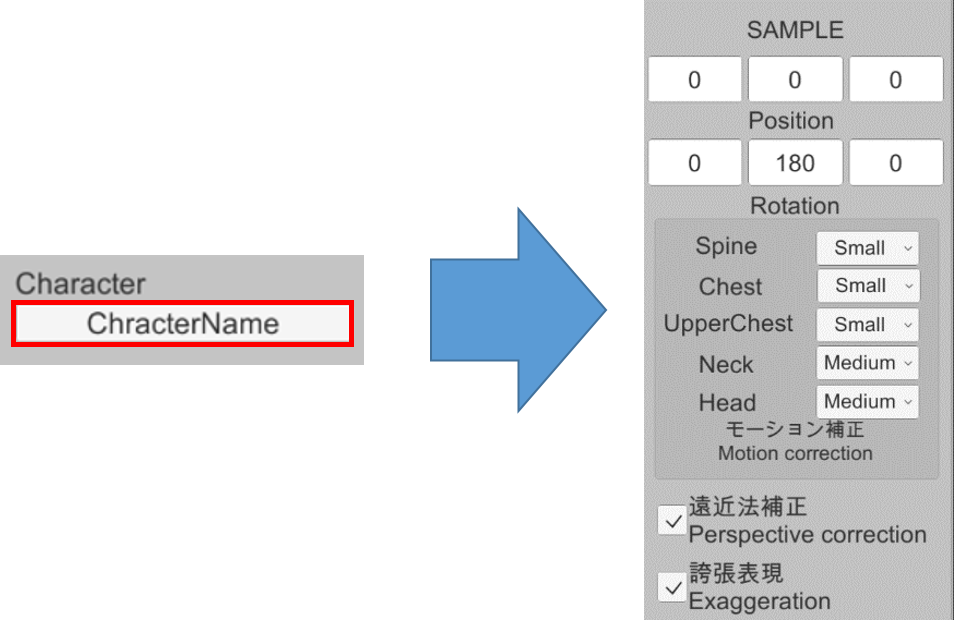
- Position … Set the position of the model
- Rotation … Set the model’s rotation value
- Motion correction … You can make the motion look like 2D, but the motion itself will become unnatural if you set it to Large (described in detail later).
- Perspective correction … Automatic size correction according to camera distance
- Exaggeration … Adjust the length of the limbs as the camera approaches.
- Adjust the length of the arm and foot as the camera approaches.
Stage editor
When you select the stage name in the object window with the model loaded, the property editor will look like below image.
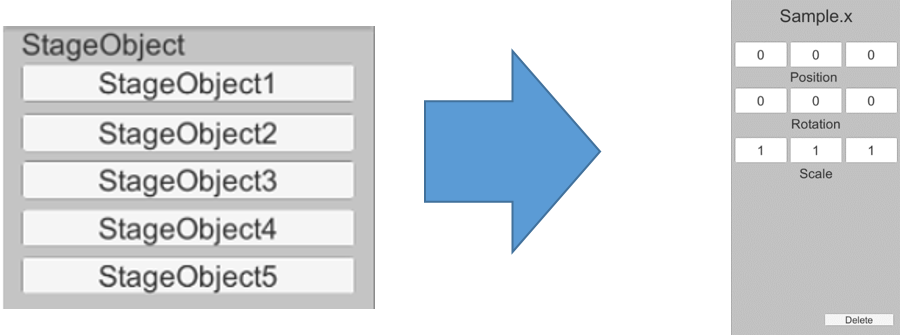
- Position … Set the position of the stage model
- Rotation … Set the rotation of the stage model
- Scale … Set the scale of the model
- Delete … Delete the model
Environment editor
If you press the Environment, you will see the following screen.
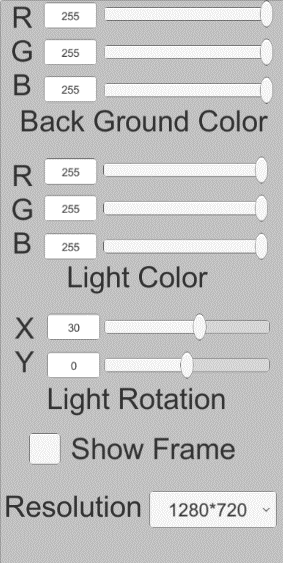
- BackGround Color …Allows you to change the background color.
- Light Color …Change the color of the light
- Light Rotation …Change the direction of the light
- Show Frame …Show the frame and Show frame and play time when playing
Audio editor
Press the “Audio” button and you’ll see the following screen.
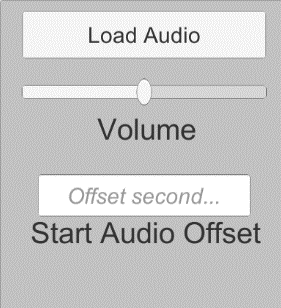
- Load Audio …Load music (.mp3)
- Volume … Adjusts the volume of the music.
- Start Audio Offset … Adjusts the timing of the playback.
When offset>0, playback is delayed.
If offset<0, play from the middle
*Please adjust the timing of playback as it often shifts.